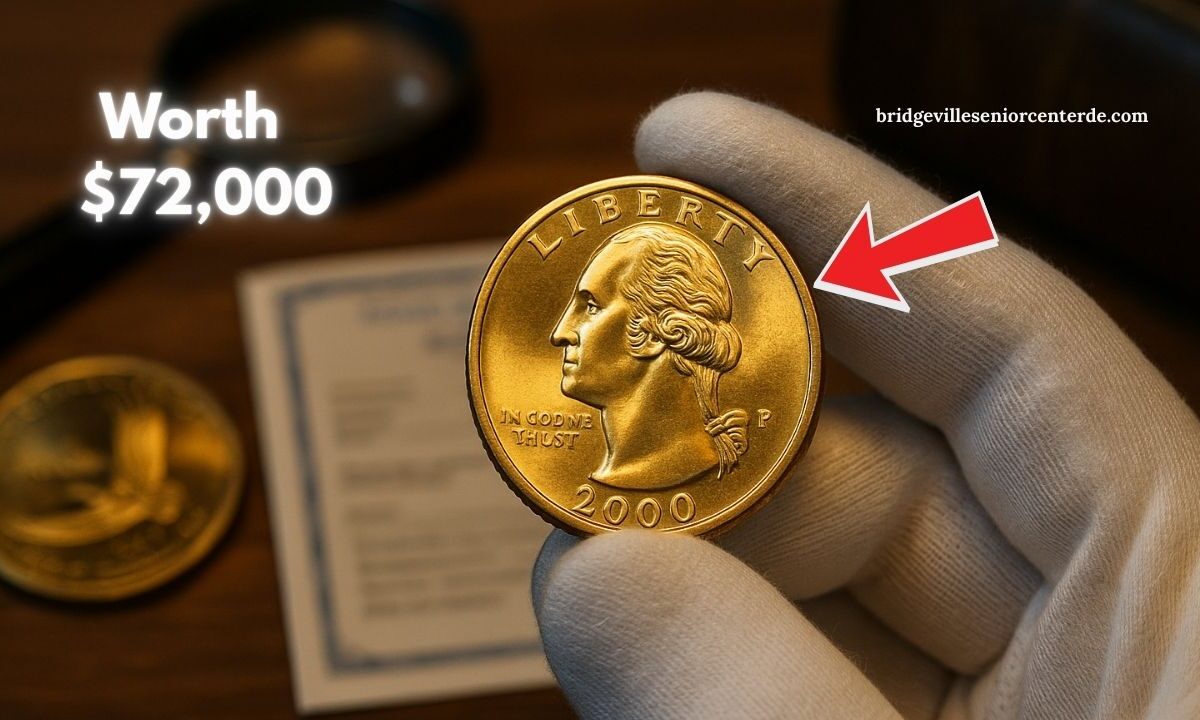If you’ve got a 2000‑P Sacagawea dollar lying around, it may be time to take a closer look. A rare minting mistake known as the “mule error” could turn this seemingly ordinary coin into a valuable collectible worth up to $72,000 or more.
Collectors and dealers are constantly on the lookout for this rare piece, and just a few exist in circulation today.
This guide will help you identify the rare 2000‑P Sacagawea dollar mule error, explain what makes it so special, and what steps to take if you believe you have one.
What Is a Mule Error Coin?
A mule error happens when a coin is struck with two mismatched dies—an obverse (front) and reverse (back) from different coins.
In the case of the 2000‑P Sacagawea dollar mule, a Washington quarter obverse was mistakenly paired with the reverse of a Sacagawea dollar. The coin was struck on the golden-colored planchet intended for the dollar coin.
This major mint error was never intended to be released and represents one of the most dramatic and valuable modern coin mistakes.
How Rare Is the 2000‑P Sacagawea Mule?
Only a very limited number of these coins are known to exist. It’s believed that fewer than two dozen authentic specimens have been discovered, making them exceptionally rare.
Most have been graded and certified by top coin grading services, and nearly all are held by collectors or investors.
Some examples of this mule coin have sold for over $150,000 in top condition, while those with minor wear can still fetch $72,000 or more.
How to Identify the Mule Error Coin
You don’t need to be an expert to do a quick inspection. Here’s what to look for to see if your 2000‑P Sacagawea dollar is the rare mule error:
Identification Checklist
| Feature | Mule Error Coin |
|---|---|
| Obverse (Front) | George Washington from a quarter |
| Reverse (Back) | Soaring Eagle from a Sacagawea dollar |
| Mint Mark | “P” indicating Philadelphia Mint |
| Metal/Color | Golden color typical of Sacagawea dollar |
| Edge | Plain edge (not reeded like a quarter) |
| Size & Weight | Same as Sacagawea dollar (26.5 mm, 8.1 grams) |
Some versions also show unique die cracks or marks, depending on which die pairing was used. These small imperfections help authenticate the coin and determine its variety.
Known Die Pair Varieties
Three major die pair varieties of this mule error have been documented:
- Die Pair 1: Most common; often shows a crack on the reverse near the word “OF”
- Die Pair 2: Slightly different alignment and weaker strike
- Die Pair 3: Rare, usually has clearer detail on Washington’s bust
All three are highly valuable, with Die Pair 1 being the most frequently encountered among confirmed sales.
Recent Auction Prices
The value of the 2000‑P Sacagawea mule error varies depending on condition, grading, and rarity of the die pair. Here’s a general price range based on historical sales:
| Condition | Estimated Value |
|---|---|
| AU (Almost Uncirculated) | $72,000 – $100,000 |
| MS65 (Mint State) | $100,000 – $150,000 |
| MS66 and above | $160,000 – $195,000+ |
Coins that are certified and encapsulated by grading services often command premium prices.
What to Do If You Think You Have One
If you believe you’ve found a 2000‑P Sacagawea mule error, here’s what to do:
- Examine the Coin Closely
Compare the coin against a Washington quarter and a Sacagawea dollar. Look for the mismatched design. - Do Not Clean the Coin
Cleaning can significantly reduce its value. Leave the coin as-is. - Send It for Professional Grading
Submit your coin to a certified grading service to authenticate and assign a value. - Consult a Reputable Dealer
A professional coin dealer can help you determine the best course of action, including auction or private sale.
The 2000‑P Sacagawea dollar mule error is one of the most exciting and valuable modern U.S. coin mistakes. With fewer than two dozen known to exist, this coin can command prices of $72,000 to nearly $200,000, depending on condition.
If you think you have one, take the proper steps to authenticate it—you could be holding a true piece of numismatic history.
FAQs
How do I know if my 2000‑P Sacagawea dollar is the mule error?
Look for a George Washington obverse on a gold-colored coin with the Sacagawea eagle reverse. It must have a “P” mint mark.
What makes the mule error so valuable?
It’s an extremely rare mint mistake involving two mismatched dies—Washington quarter and Sacagawea dollar. Rarity and collector demand drive the high price.
Where can I get it authenticated?
Submit your coin to a professional grading service such as PCGS or NGC to confirm its authenticity and value.

